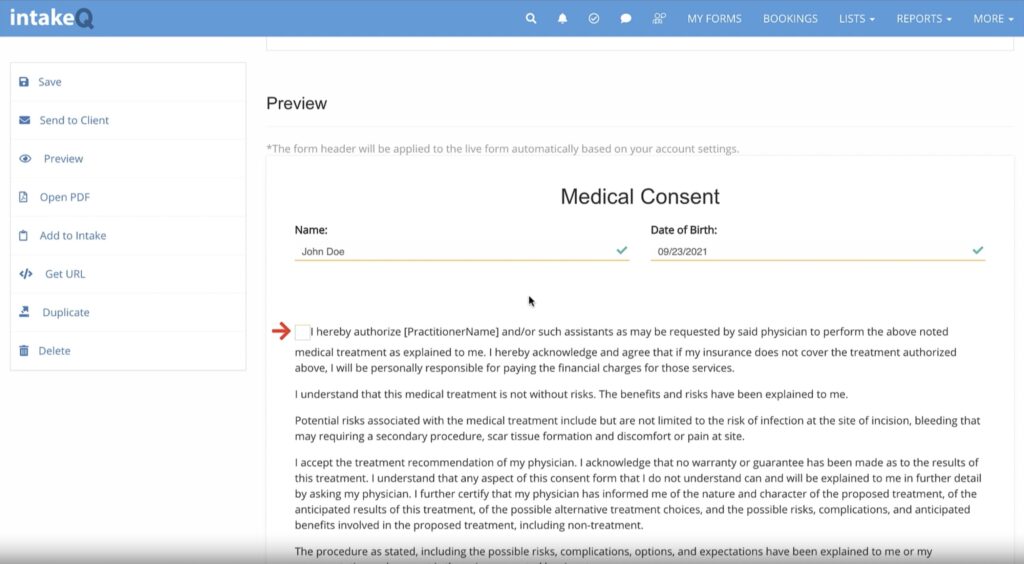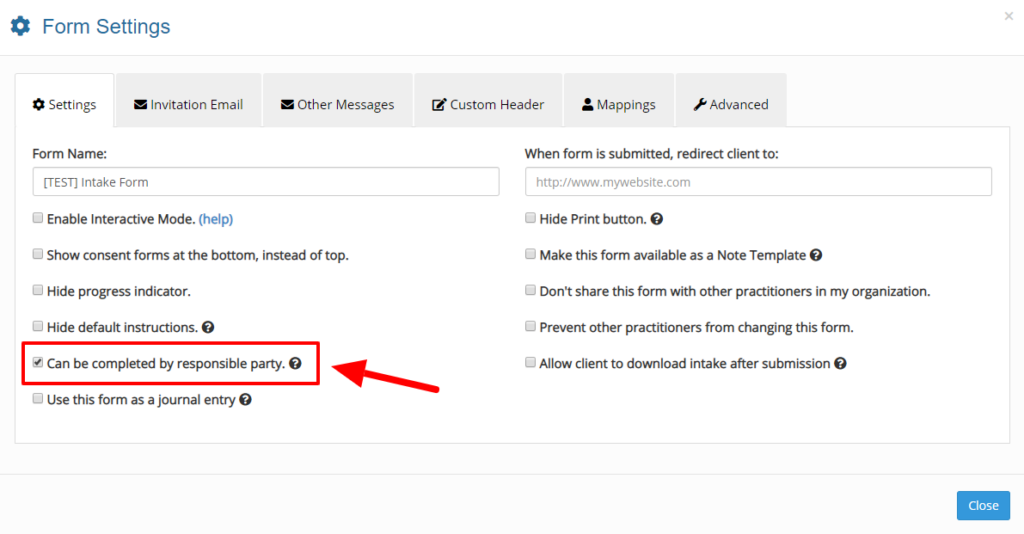Free Medical Release Form Template: Simplify Patient Paperwork & Privacy
Stay HIPAA-Compliant with Our Ready-to-Download Medical Release Form Template
Highlights
- Download IntakeQ’s free medical release form to streamline patient paperwork and ensure privacy.
- Use the template to comply with HIPAA and PIPEDA regulations, protecting patient data.
- Customize the form to fit your healthcare practice’s specific needs.
- Verify patient competency before obtaining consent to safeguard legal and ethical standards.
- Opt for IntakeQ’s electronic forms for secure, efficient patient data management.
A medical release form is an essential document for your healthcare practice. It allows you to keep patient information safe while staying HIPAA-compliant.
In short, it’s a consent form that permits you to share private patient data with other parties — but that doesn’t mean just anyone. Depending on what the patient authorized in the form, you can disclose information with other doctors, lawyers, family members, insurance providers, or care guardians. It explicitly states in writing who can and cannot view a patient’s records.

And according to the Health Insurance Portability and Accountability Act (HIPAA) in the U.S. and the Personal Information Protection and Electronic Documents Act (PIPEDA) in Canada, it’s your responsibility to ensure these records don’t end up in the wrong hands. It’s a serious matter with costly consequences.
For these reasons, it’s clear that medical release forms are a critical part of your operations — but it’s equally vital to know their details, essential features, and impact on your practice. Keep reading to learn why your consent forms are important (plus, access a free medical release form template).
What’s In a Medical Release Form?
There are a few critical elements of a medical release form. To be as specific as possible, your consent form should include seven key sections:
- Detailed patient information. It’s important to know exactly who your patient is. Details such as contact info, address, social security number, and date of birth clearly identify the patient.
- Who can access the information. Specificity matters. Receiving parties should be clearly identified (relationship to the patient, names, addresses, and contact information). And even if a patient claims you can share their information with anyone — don’t risk it. Have them specify in writing exactly who has access.
- What information can be shared. Healthcare is innately personal. If your patients opt to share information with other parties, they don’t have to share everything. Have your patients clearly state what’s shareable (pregnancy, test results, cancer, mental health diagnoses, etc.).
- The reason for disclosure. In even more detail, the patient needs to outline why they want to share their information (social security number, college immunization, worker’s compensation, etc.).
- When authorization expires. It’s a good idea for patients to state how long receiving parties have access. If they don’t leave a date, let them know your system will place a default expiration on access. While this may require getting additional consent in the future, it’s worth it; extra consent forms are better than legal consequences.
- Clear disclaimers. Let patients know their rights, how the form will be used, and fees for distribution. Assure them that they can revoke consent any time.
- Date & signature. Wrap up your release form with a signature field and date.

Depending on your industry, some of this information may differ. However, you can protect yourself from any potential liabilities by sticking to these key elements.
A Note of Caution
Before your patient signs the release, you need to ensure they’re of sound mind. Their consent is void if they’re mentally or physically incapable of signing the release. It’s important to tread carefully here, both for the privacy of your patients and the security of your business.
Remember: According to the HIPAA Privacy Rule, you can be held accountable for sharing a patient’s information if you knew they couldn’t give consent.
If a patient is too unstable to authorize consent, you can have someone sign in their place — whether it’s a parent, a spouse, or another third party with healthcare power of attorney.

Furthermore, in cases where the patient is initially unable to sign, IntakeQ’s system is invaluable. It allows you to easily track incomplete forms for seamless follow-ups. Then, once the patient is stable and capable, IntakeQ ensures they can access, review, and sign the release form themselves. This way, you can adhere to legal and ethical standards and demonstrate a commitment to patient autonomy and informed decision-making.
Free Medical Release Form Template: Guarantee Patient-Friendly Compliance
When you’re handling sensitive healthcare records, there’s no contest between paper and electronic forms. Electronic forms offer swift, secure access to information, crucial for compliance and patient care. They allow you to share medical records in real-time, essential for urgent decision-making and prompt treatment.

IntakeQ’s digital forms are an efficient and convenient way to maintain HIPAA compliance, prioritize data security, and protect patient privacy:
- Embed a link to the form on your website or in the patient portal, allowing easy access for anyone requesting it.
- Email the form directly to patients, reducing steps and speeding up the process.
- Update patient records instantly upon form submission for timely and accurate medical decisions.
With IntakeQ’s electronic medical release forms, you can ensure your practice stays ahead in both compliance and patient care.
Looking for a secure solution to streamline your medical release process? Download your free medical consent form template today!
(This is merely an example document. HIPAA Covered Entities should consult their Institution’s Privacy Policy for details specific to HIPAA Authorization needs and their own business operations.)
References
HIPAA Violation Fines. (2023). The HIPAA Journal. https://www.hipaajournal.com/hipaa-violation-fines/
Summary of the HIPAA Privacy Rule. (2022, October 19). U.S. Department of Health and Human Services. https://www.hhs.gov/hipaa/for-professionals/privacy/laws-regulations/index.html#:~:text=Obtaining%20%22consent%22%20(written%20permission

